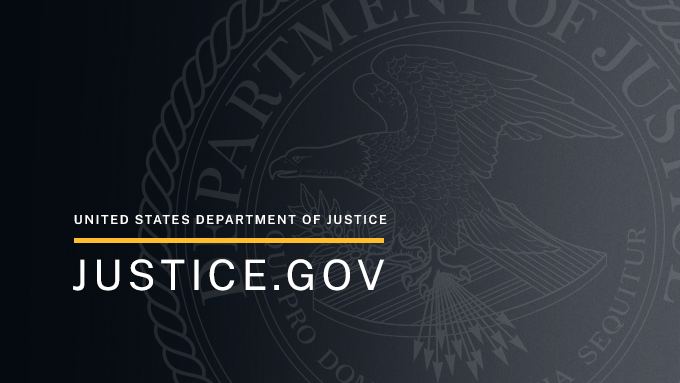It’s a pleasure to be here with all of you today, and I want to thank Amanda for that warm introduction.
I also appreciate the American Innovation Project for putting together this important conference.
Before diving into specifics, let me provide a quick snapshot of the work my Division handles every day.
Our team is on the front lines enforcing criminal laws and protecting victims’ rights across a wide range of areas—from tackling narcotics trafficking and violent crime to addressing child exploitation, cybercrime, financial fraud, and money laundering.
For this audience in particular, one area of focus is the digital asset ecosystem.
Our goal is to identify and stop bad actors while allowing responsible innovators and users to confidently leverage the opportunities offered by new technologies.
The Role of Digital Assets in Innovation and Security
Digital assets are playing an increasingly critical role in driving innovation and economic growth here in the United States.
As these technologies become more integrated into our daily lives, ensuring a safe environment for legitimate innovators and holders is essential—not just for economic growth, but for national security.
That’s why Deputy Attorney General Todd Blanche asked me to speak today about how the Justice Department is approaching fair and consistent enforcement.
We aim to strike a balance: allowing good actors in the digital asset industry to thrive, while holding accountable those who misuse these tools for criminal activity.
The Justice Department’s Approach to Enforcement
Earlier this year, in April, the Deputy Attorney General issued a memorandum to prosecutors across the country, including those in my Division.
The message was clear: our role is to enforce criminal laws—not to act as regulators or lawmakers.
We follow the evidence, apply the legal framework, and seek justice, guided by the Constitution and the principle of due process.
Simply put, people must know what is illegal. As the Supreme Court has emphasized, defendants generally need to understand the facts that make their actions criminal.
This memo reinforces that prosecutors will not use federal criminal statutes to create new regulatory rules or leave innovators guessing about potential criminal liability.
Addressing Industry Concerns
We understand that the digital asset industry continues to seek clarity from the Department.
Lawyers and developers have raised questions about whether creating smart contracts or publishing code could expose them to criminal liability.
These are nuanced issues, and we evaluate each case carefully, ensuring our actions align with both the letter and spirit of the Deputy Attorney General’s guidance.
Our stance is straightforward: writing code or innovating new ways to store and transmit value, without ill intent, is not a crime.
We will, however, prosecute those who knowingly commit or aid criminal acts such as fraud, money laundering, and sanctions evasion.
Bad actors undermine trust in technology and stifle innovation—but intent matters.
Simply contributing code to an open-source project does not make someone criminally liable.
Technology-Neutral Enforcement
Being involved in digital assets does not mean someone faces different legal standards.
Criminal liability remains consistent across technologies.
Whether using traditional tools or new digital platforms, those committing crimes will be held accountable.
Conversely, law-abiding innovators should feel secure in pursuing their work without fear of arbitrary prosecution.
Under the guidance of the Attorney General and Deputy Attorney General, the Department is simplifying its approach: we hold bad actors accountable while avoiding prosecution of inadvertent regulatory missteps.
Clarifying the Law on Money Transmission
To provide a concrete example, let’s discuss 18 U.S.C. § 1960, the statute covering unlicensed money transmission.
The Department will not pursue charges for regulatory violations unless there is clear evidence that a defendant knowingly broke the law.
Certain circumstances may still warrant prosecution—for example, transmitting funds derived from criminal activity—but fair notice and intent remain central.
Developers who create neutral tools, without criminal intent, will generally not be held responsible for someone else’s misuse of those tools.
Prosecuting Bad Actors and Protecting Innovation
Our primary mission is to remove criminals from the digital asset markets.
Activities like embezzlement on exchanges, crypto investment scams, hacking, and exploiting smart contract vulnerabilities have no place in fair markets.
They harm innovation and erode public trust.
Recent examples of enforcement include:
-
Prosecuting members of a China-based money laundering syndicate operating out of Los Angeles, which defrauded victims through cryptocurrency scams.
-
Filing civil forfeiture complaints against $225 million connected to crypto investment fraud and money laundering.
-
Prosecuting a Ponzi scheme falsely promising high profits through AI-driven cryptocurrency trading.
Closing Thoughts
It’s encouraging to have this conversation with you at the American Innovation Project.
The digital asset industry has a critical role in ensuring markets are safe and fair.
Developers, users, and innovators can and should be part of the solution—helping to prevent bad actors from exploiting the system.
At the same time, well-intentioned innovators should never fear for their liberty.
Protecting consumers and fostering innovation go hand in hand—it’s common sense for everyone involved.
Thank you all for your time and attention.


